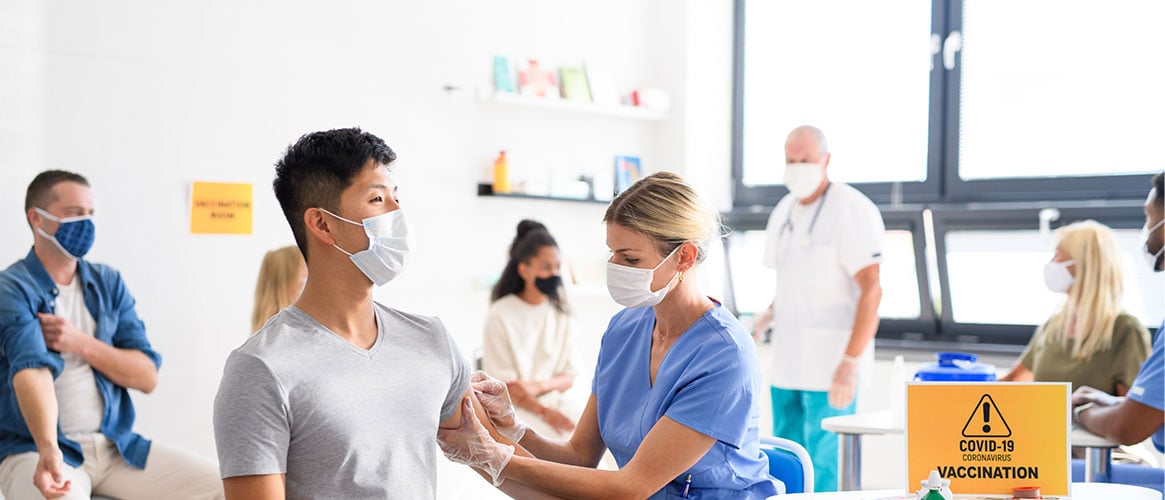It’s been more than a year since the COVID-19 Pandemic began, causing crises all over the world. In that time more than 3.5 million Californians have become infected and sadly, almost 60,000 have died. The preventative measures we’ve taken, like wearing a face covering, keeping our distance, and frequently washing our hands have helped to slow the spread. Now there is a new tool to help end this pandemic – vaccines.
The history of vaccines goes back hundreds of years. Edward Jenner developed the first vaccine—for smallpox—in 1798. Since then, vaccines have helped bring many diseases under control such as polio, measles, and whooping cough to name just a few.
How vaccines work
Vaccines work by introducing a small amount of inactivated virus or bacteria into our body that triggers the immune system to create antibodies. These antibodies remain for a certain period of time following illness or vaccination, allowing the immune system to immediately respond and quickly eliminate the virus when it is encountered.
How the COVID-19 vaccine is different
The COVID-19 vaccines are a new type of vaccine and work differently to build immunity in the body. They do not contain the virus and cannot cause COVID-19. The Pfizer and Moderna vaccines are Messenger RNA or mRNA vaccines. Both use mRNA to tell the cells in our body to make a small portion of a protein that is unique to the coronavirus. Then the immune system starts building an immune response. The Johnson & Johnson Janssen vaccine is a viral vector vaccine. It uses a harmless version of a different virus, called a vector, to trigger an immune response in the body. At this time, the Pfizer and Moderna vaccines require two shots; the Johnson & Johnson Janssen vaccine requires just one. It’s possible that future booster shots for all the COVID-19 vaccines may be needed as new variants of the virus develop.
The vaccine and your workplace
The COVID-19 vaccines are proving to be effective in preventing the spread of the virus. As more of the population gets vaccinated, new COVID-19 cases are decreasing and many states including California are able to loosen restrictions. Here's how you can help:
- Encourage employees to get vaccinated.
- Support vaccine acceptance by having company leaders share their reasons for being vaccinated. The Centers for Disease Control (CDC) offers free workplace posters to help you encourage employees to get vaccinated.
- Provide your employees with clear information on vaccination. COVID-19 vaccinations are free and available to everyone aged 12 and over.
- Be flexible and allow employees to take time from work to get their immunization. The COVID-19 Supplemental Sick Leave law, passed in March 2021, requires businesses to provide supplemental paid sick leave for COVID-19, including time off to get vaccinated. Small businesses employing fewer than 25 employees are exempt from the law but can qualify for a federal tax credit if they do not offer supplemental sick leave.
- Continue to follow the California Department of Public Health (CDPH) guidelines and the Cal/OSHA emergency COVID-19 regulations.
